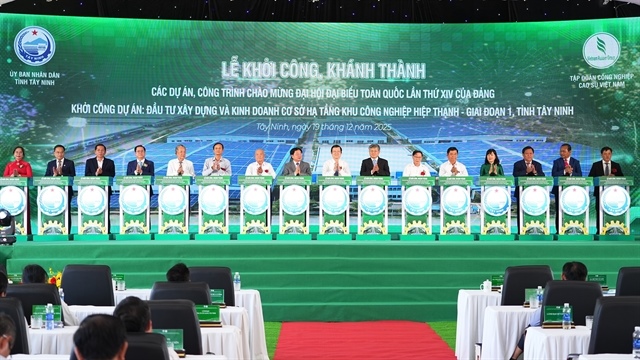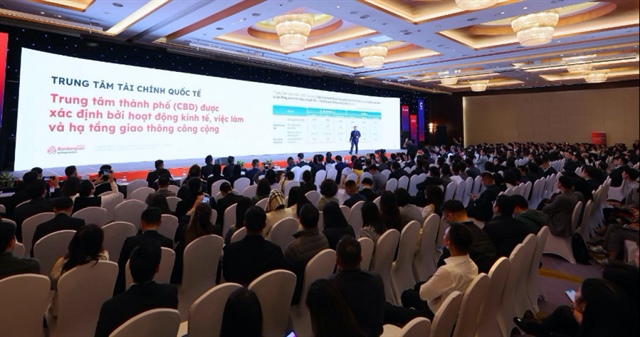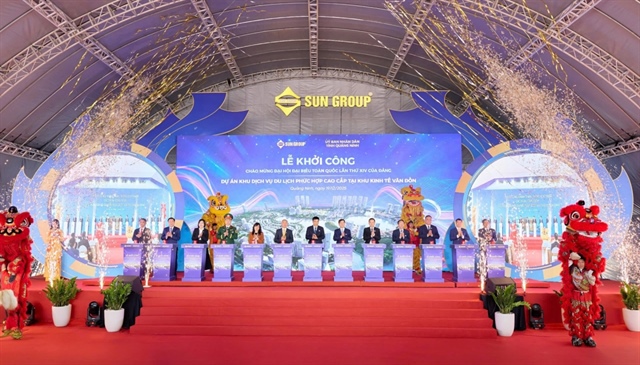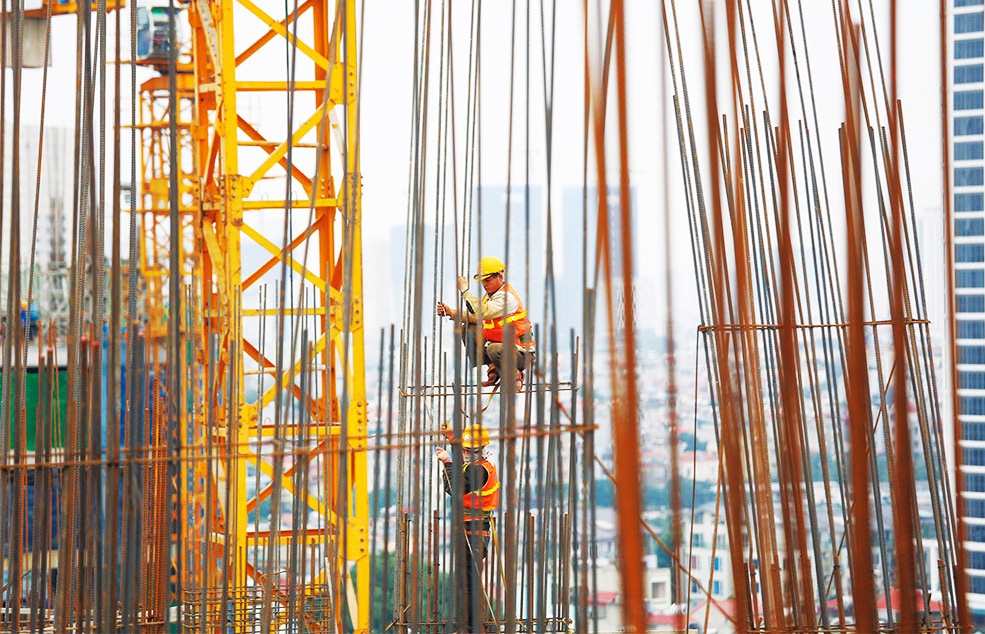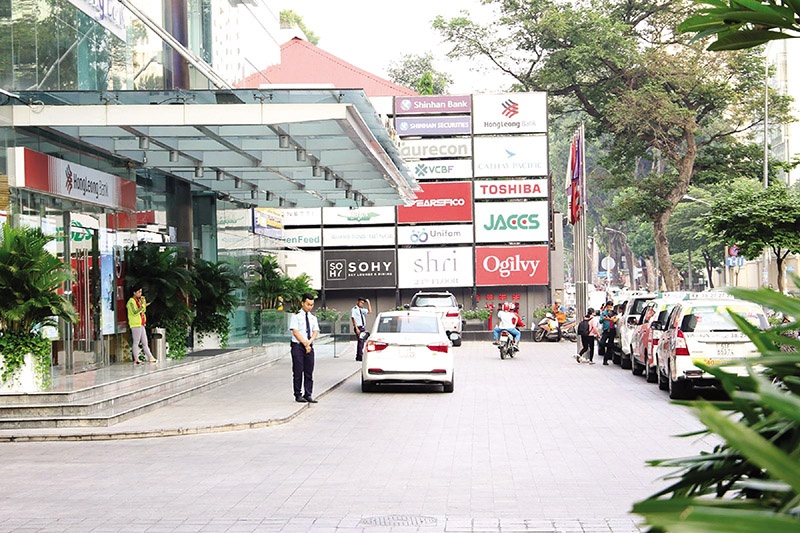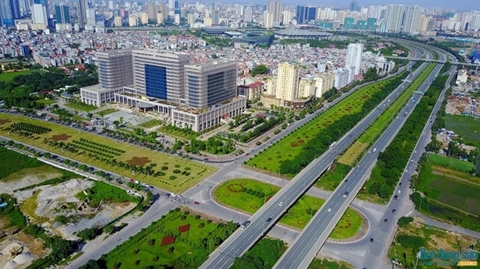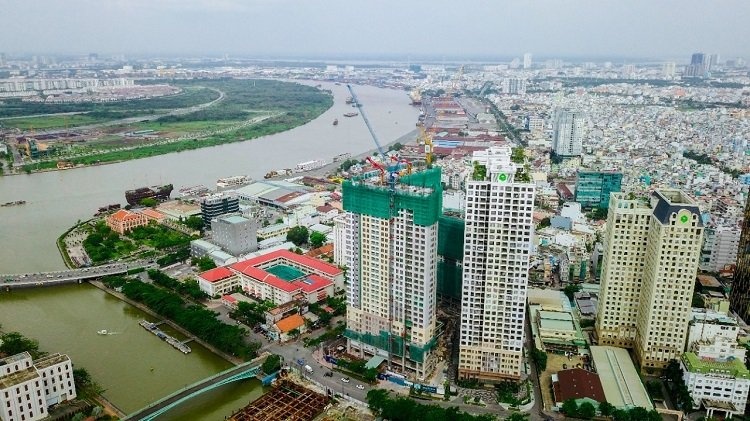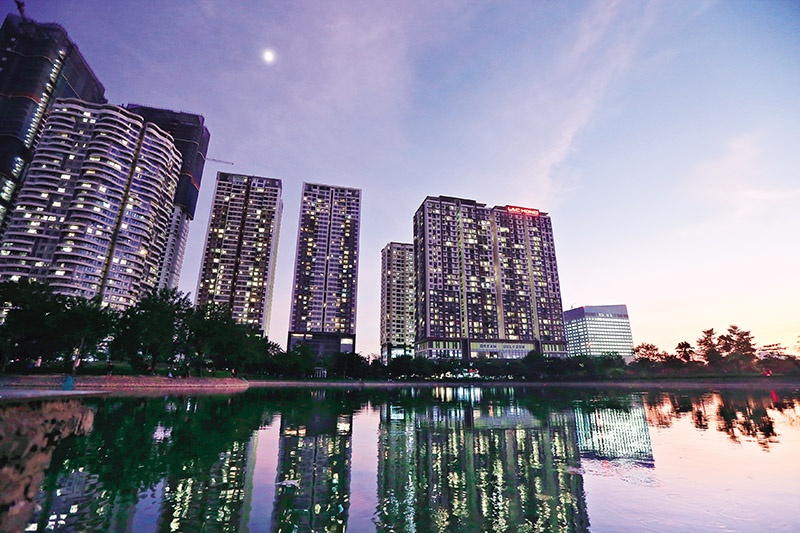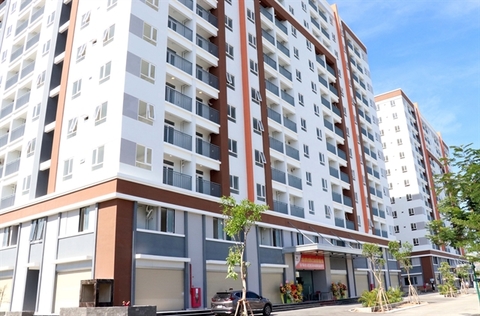Industrial property taking spotlight
Industrial property taking spotlight
The industrial real estate segment wants to be a bright spot for the country in 2023, and the prospects are there for new funding from neighbouring countries if Vietnam can utilise its advantages to the fullest.
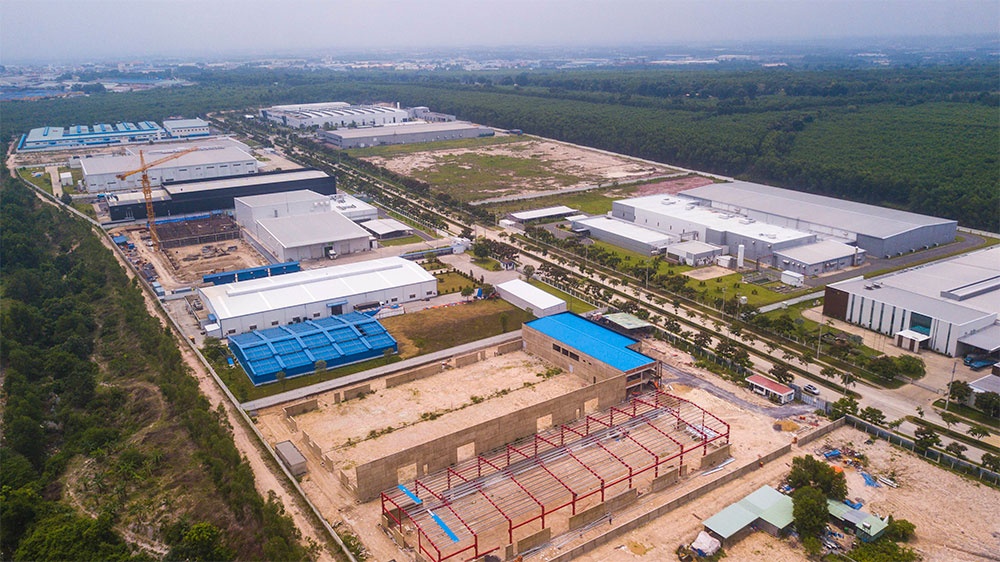
According to the Ministry of Planning and Investment, foreign direct investment (FDI) last year reached its highest level in the past five years at $22.4 billion, up 13.5 per cent over the previous year. Among those, real estate took the second-highest position with 16 per cent.
In particular, FDI capital poured into the real estate market, mainly through the segment of industrial real estate and factories. This is an advantage that has helped the segment maintain its growth potential in the context that the entire market has been at a standstill.
According to Cushman & Wakefield (C&W), rents continued to increase in all industrial real estate segments in the southern market in recent years. Industrial land for lease reached 28,170 hectares, up 1 per cent on-quarter and 12 per cent on-year.
The occupancy rate was close to 81 per cent stable on-quarter and down 5 percentage points on-year. The average rent was $159 per square metre per lease term, up 3 per cent on-quarter and 10 per cent on-year. The supply of ready-built factories reached about 4.8 million sq.m, up 2 per cent on-quarter and 17 per cent on-year.
Meanwhile, in the southern region, the occupancy rate in six key provinces and cities reached 84 per cent. Binh Duong with more than 7,000ha of industrial land has been filled over 90 per cent. Ba Ria-Vung Tau and Long An have had new projects entering the market, while Ho Chi Minh City, Binh Duong, and Dong Nai currently lack supply.
According to a report of VNDirect Securities released in December, from the start of 2022 there were no new proposals to establish industrial zones (IZs) in both the south or the north. In addition, there are very few new IZs included in the national development master plan.
Tran Khanh Hien, analysis director at VNDirect, said this comes from the fact that IZ development is still spread out and decided by localities.
“Therefore, the change of senior leaders of many localities in the past year has slowed down the approval process. This results in slower-than-expected site clearance and overlap in planning or infrastructure outside the IZ,” Hien said.
VNDirect believes that the industrial real estate market will face a scarcity of new supply from now until the end of the year.
“After the supply skyrocketed in 2022, only about 700ha of land will be put to use in the south before 2026, mainly in Long An and Dong Nai. Meanwhile, although many projects are awaiting approval, the shortage of new supply in the northern market will last at least until the end of 2023,” Hien said.
About 4,500ha is expected to be put into operation from 2024-2026, with the largest supply coming from Bac Ninh and Haiphong.
Meanwhile, Trang Bui, country head of C&W, also said that the supply of industrial real estate at the end of 2022 has revealed a scarcity, and this scarcity is pushing up industrial real estate rental prices.
“Supply of industrial real estate in Hanoi and Ho Chi Minh City is almost filled. With advantages in infrastructure, industrial land in these two areas is more competitive, pushing rents higher,” Bui said.
According to its report, in the northern key economic zone alone, as of Q3/2022, Haiphong has overtaken Bac Ninh in terms of supply to with more than 3,250ha. However, Bac Ninh still owns many ready-built factory projects, nearly double that of Haiphong. In addition, when the supply in Hanoi is no longer available, investors may consider shifting to neighbouring provinces such as Hung Yen or Hai Duong.
In the southern economic region, the picture of industrial real estate in 2022 was similar to last year. Binh Duong and Dong Nai were the two provinces with the largest area of industrial land with more than 7,500ha each and actively occupied. Ba Ria-Vung Tau, Long An had new projects entering the market in the last quarter.
Competitive pressure
Although Vietnam was among the top countries to attract FDI in the region in 2022, there is increasing competition from other countries and Vietnam is currently lagging in attracting inflows into the electric vehicle (EV) and semiconductor industries. The VNDirect analysis team said that as an example, Indonesia’s promulgation of a new law in 2020 has brought many investment and operation opportunities for foreign companies.
“Since then, FDI inflows into Indonesia grew positively by 10 per cent on-year in 2021 and up 46 per cent on-year to $31 billion in the first nine months of 2022. Vietnam and Indonesia are the recipients of most FDI in the region, and while Vietnam is transforming itself into an electronics manufacturing centre, Indonesia is aiming to develop an EV supply chain,” said Hien from VNDirect.
According to Trang Bui from C&W, the rental price of industrial land in 2022 in the southern key economic region reached around $154 per sq.m per lease term (up 10 per cent over the same period) and $110 in the north (increasing by 6 per cent over the same period of last year). This price is already close to the price in other countries in the region, such as $164 in Indonesia, $139 in the Philippines, and $132 in Thailand per sq.m per lease term.
However, in addition to land rent, investors also consider many other factors before making a decision.
“Compared to other countries in the region, Vietnam has a favourable geographical position as the gateway to the sea of Laos, northeast Cambodia, and Thailand, located at the crossroads of maritime and maritime routes. International air traffic, with trans-Asian road and rail routes, create favourable conditions for exchanges with countries in the region and beyond,” said Trang.
Meanwhile, John Campbell, associate director of Industrial Services at Savills Vietnam, said that compensation costs plus land prices in Vietnam have increased considerably in recent times. Therefore, this is a challenge for investors who want to establish new IZs or convert agricultural land to industrial use.
Along with that are the long-term challenges of qualified labour and stronger infrastructure.
“Vietnam has a large labour force, and while many new manufacturing investments are helping the economy move up the value chain, the country still lacks a supply of skilled labour,” he said. “Therefore, when attracting investors, the government must also ensure that the quality and quantity of skilled labour are not too disparate compared to other markets in the region.”
Industrial outlook
Assessing the prospects of industrial real estate in 2023, experts reaffirmed that the segment should eventually take off in most circumstances.
In 2023, the macroeconomy is forecasted to no longer grow as strongly as in 2022, even facing some difficulties such as a sharp increase in inflation. However, compared to the common ground, Vietnam is still an attractive investment destination for FDI inflows.
In the long-term, according to data from C&W, the market will receive 20,600ha of industrial land in the southern key economic zone and 17,000ha of industrial land in the north from this year onwards.
Nguyen Hai Minh, vice chairman of the European Chamber of Commerce in Vietnam, said that European businesses would like to participate more deeply here, especially in industries that utilise technology transfer and green technology. Therefore, the prospects of FDI inflows into Vietnam in the coming time is still substantial.
Meanwhile, professor Dinh Trong Thinh from the Institute of Finance said that Vietnam holds many advantages compared to other countries in the region.
“For example, domestic rent is still relatively low if you put it on the balance sheet with Malaysia, Thailand, China, or India. Not to mention, the labour force in Vietnam is abundant, and the salaries are not too high. With the explosion of e-commerce in recent years, industrial real estate will attract Asian investors from Singapore, Japan, and South Korea,” Thinh said.


